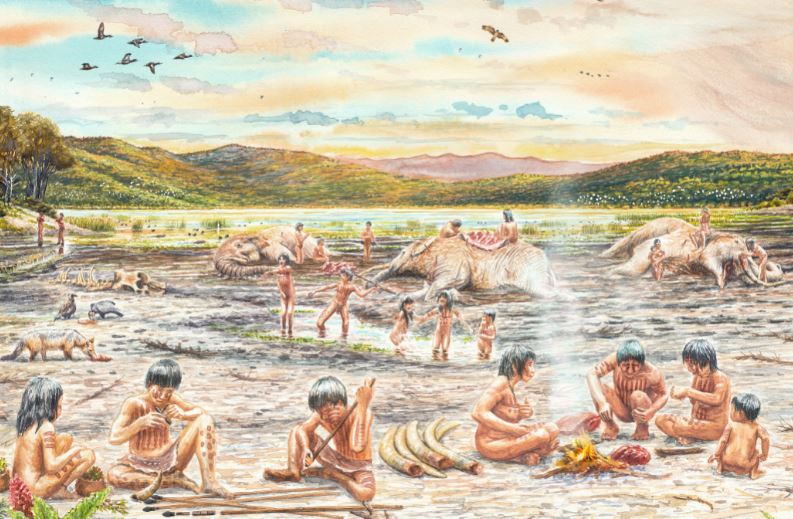The entity aims to help the work related to archaeology and human palaeontology that Spanish teams are carrying out outside Europe
In this call, 15 new projects are incorporated
Fundación Palarq, a private and non-profit organization that supports the missions in archaeology and human palaeontology of Spanish researchers, has decided to subsidize a total of 59 projects for the work to be carried out during the 2021 campaign. These are projects of Spanish teams located outside Spain and Europe, distributed in a total of 30 countries around the world.
On this occasion, most of the work (29) is on the African continent, in countries such as Egypt, Morocco and Tanzania. In Asia there are 15 projects in countries such as India, Iraq, Israel, Jordan or Lebanon. South and Central America have 12 of the projects, distributed among Argentina, Chile, Ecuador, Mexico and Peru, while in Oceania is one of the missions.
Here you can see the complete list of the supported projects
Some of the institutions responsible for these projects are the Atapuerca Foundation, the Spanish National Research Council (CSIC), the National Center for Research on Human Evolution (CENIEH) or the Catalan Institute of Human Paleoecology and Social Evolution (IPHES), as well as some twenty universities including the universities of Alicante, Almeria, Barcelona, Burgos, Cantabria, Cadiz, Cordoba, Universidade da Coruña, Granada, Jaén, La Laguna, Santiago de Compostela, Valencia, Universidad Complutense de Madrid, Universitat Autònoma de Barcelona, Universitat Pompeu Fabra and UNED.
Among the projects chosen, some have already received the support of the Foundation in previous campaigns and others are being supported for the first time by these grants. In the current call there are 15 new projects that will be supported by the Palarq Foundation in the 2021 campaign:

Archaeological remains of the Punic-Roman city of Tipasa, Algeria.
AFRICA
LIXVS-GARVM research project. The LIXVS Halieutic Cycle. Interdisciplinary Study of Marine Resources in Ancient Times (Morocco) | Universidad de Cadiz
New technologies applied to the taphonomy of human origins in East Africa (Tanzania, Kenya and Ethiopia) | Universidad Complutense de Madrid
The Fifth Cataract Project: human-environment interactions during late prehistory (FiCaPro) (Sudan) | Universitat Pompeu Fabra
The beginnings of Achelense in East Africa: excavations at Loc 14 (Tanzania) | CSIC
The origin of Homo sapiens and its adaptation to coastal environments: the ESA-MSA transition in Kilwa (Tanzania) : Universidad de Valladolid
Homo erectus behavior and adaptation: Re-investigating the Tighennif (ex Ternifine) hominid site (Algeria) | CENIEH
Spanish-Algerian archaeological mission in Tipasa: exploring the ancient territory of an African World Heritage city (Algeria) | Universidad de Murcia

Example of ger, the traditional housing of the shepherds, in Züünkhangai, Mongolia.
ASIA
Sela: An Edomite mountain settlement in Jordan (Jordan) : Universidad de Barcelona
Archaeological Park of Trialeti. Integral study of the archaeological and cultural heritage in its area of influence, for the implementation of a tourist and cultural resource (Georgia) | Universidad de Extremadura
Archaeology of nomadic pastoralism in Mongolia: the invisible traces of domestic spaces (Mongolia) | Universidad de La Laguna
Archaeological project in the Kachchh (India): pastoralism, exchange and the origins of the Indus Civilization (India) | Institut Català d’arqueologia Clàsica (ICAC), CSIC
 Illustration representing the Gonfoterians in the Tagua Tagua Lagoon, Chile. Photo: Mauricio Álvarez.
Illustration representing the Gonfoterians in the Tagua Tagua Lagoon, Chile. Photo: Mauricio Álvarez.
AMERICA
First human steps in South America: walking between Gonfoterios (Chile) | IPHES
Archaeological research for the study of ancient settlement and diversity of paleoenvironments in the northern plateau of Chubut, Central Patagonia (Argentina) | Universitat Autònoma de Barcelona
ARVCODA – Archaeology of Plant Resources in the Atacama Desert Coast (Chile) | CSIC
Archaeological excavations on Diego Portales Island (Última Esperanza, Chile): Canoeros del mar interior (Chile) | Universitat Autònoma de Barcelona
The study of the Andean pre-Hispanic agricultural landscape. Archaeological excavations in the Huari and Inca imperial terraces of the Sondondo valley (Peru) | Universidad de Oviedo
More than 200 grants in four years
Since its creation in 2016, the Palarq Foundation has been increasing the number of subsidized missions. In the first call, 22 projects were favored, while in 2017 33 works were benefited and in 2018, 44. The 2019 call provided aid to 48 projects, which were added to the 54 that received an extraordinary grant for the analysis of the elements found in the sites of our country.
- The Oldest Vanilla Pod in Europe, Used in Alchemical Experiments, Discovered at Prague Castle (La Brújula Verde 31/03/2025) - 1 April, 2025
- On the Origin of the Pork Taboo (Archaeology Magazine 31/03/2025) - 1 April, 2025
- Discovery of Quina technology challenges view of ancient human development in East Asia (Phys.org 31/03/2025) - 1 April, 2025


